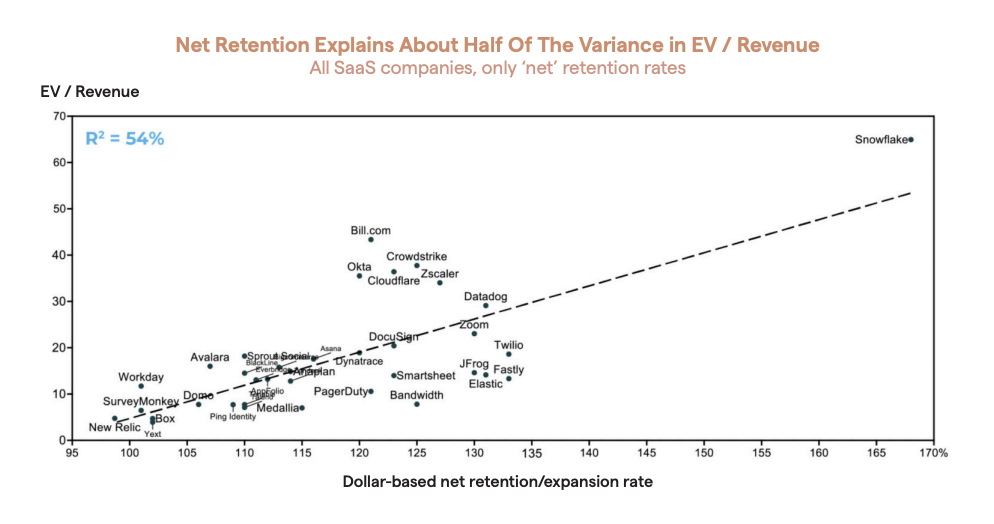In the ever-evolving landscape of SaaS metrics, one key indicator has risen to prominence: Net Dollar Retention (NDR). This metric has become a game-changer, not just for investors, but for Customer Success (CS) leaders as well. It's time to reshape our budgeting narrative and position CS as a significant driver of growth within the business.
Why NDR Matters
In the past, budgeting for Customer Success often revolved around efficiency metrics, leading to a perception of CS as merely an overhead department. However, with the increasing importance of NDR, the narrative has shifted dramatically. Investors, including private equity, venture capital, and public markets, now prioritize NDR as a key metric for company valuation.
As Mackey Craven of OpenView Ventures aptly puts it, "Retention is the metric we care about most." NDR reflects not only customer satisfaction but also their willingness to expand usage and derive more value from the product.
Here’s how we used to budget for Customer Success: “I need one CSM per $2,000,000 in revenue.” But that approach was fraught with problems. Mainly, it taught the world to treat CS as a department that needed to become more efficient. That’s why your CFO squeezes your budget every year. But in the past several years, Net Dollar Retention (NDR) has become a critical metric for investors of all types. Private equity, VC, and public market investors are now using NDR as a key metric for overall company valuation.
Repositioning Customer Success: A Three-Stage Journey
Customer Success can no longer be an overhead department that has to become more efficient over time. It’s critical that CS Leaders re-educate their CEO and CFO on how the market now treats NDR, and then advocate for their budget by anchoring to company value created, not efficiency.
Here’s the maturity framework most CS leaders go through. Think about where you are, and what can be done to “move up” in your journey.
Stage 1: CS Efficiency Metrics
At this stage, you’re advocating for budget using the basics. You’re likely using rule of thumb metrics like “One CSM per $2M in revenue” or “One CSM per xx accounts”. Those are tools for knowing how many people you’ll need to hire each year. However, using efficiency metrics like this puts a huge target on your department: the CFO will think of CS as an overhead department that needs to become more efficient over time. The result: decreasing investment in CS as a percentage of revenue as the company grows, making it hard (or impossible) for the CS leader to grow net dollar retention.
Stage 2: Positioning CS for Revenue Growth
CFOs often care more about growing revenue than cutting costs, so at this stage you position Customer Success as a revenue growth function (much like Sales). The best approach is to show how a greater investment in CS will lead to increased Net Retention Rate. Think, “$1M additional investment will lead to $2.5M in retention rate improvements.” This framing gets the CFO comparing the return of a CS investment to other places where they can invest.
You can use this CS Revenue and Expense Forecast Planner as a starting point to calculate the ROI on a greater investment in CS.
Stage 3: Linking Retention to Company Valuation
The ultimate goal is to align CS budgeting with company value creation. By forecasting the impact of retention rate improvements on company valuation, CS leaders can illustrate the significant role NDR plays in determining the company's worth.
Here’s how:
Start by forecasting the impact an increased retention rate will have on the company’s valuation. If you don’t have your own numbers, you can use the study below by Gainsight that analyzed Bessemer Venture Partners’ Cloud Index on net retention metrics (https://bit.ly/NDR-Gainsight). The conclusion is that retention rate explains about ½ of a company’s revenue multiple (EV/Revenue).
On average, we see that for every 1% point increase in net retention, enterprise revenue multiple increases 0.7x!
The Power of NDR in Driving Company Value
This has astounding implications for investments in CS. Let’s assume a company is doing $250M ARR. Based on the chart above, if the company has a 100% retention rate, then the revenue multiple for that company will be about 5x. Let’s see what retention rate improvements will do to company value:
• 100% retention = 5x multiple x $250M ARR = $1.25B
• 101% retention = 5.7x multiple x $250M ARR = $1.425B
• 105% retention = 8.5x multiple x $250M ARR = $2.125B
If the CS leader can drive just a 1% increase in revenue retention, they can increase company value by an incredible $170M. Where else can the CFO invest to see those kinds of returns on company value?
Obviously there are other factors that impact company value like overall growth rate projections, profitability, earnings history, management team, etc. But because retention rate is so critical in the eyes of investors, it will play the biggest role in determining company value.
And that’s why it’s so important for CS leaders to reach this stage of the conversation with their CEO and CFO. It’s time to get away from treating CS like an overhead department that needs to become more efficient every year. Instead, it’s time for companies to make outsized investments in Customer Success to drive outsized
increases in company value.
Conclusion: Rethinking Budgeting Narratives
In conclusion, NDR has reshaped the landscape of SaaS metrics, emphasizing the critical role of CS in driving growth and company valuation. CS leaders must move away from viewing CS as an overhead department and instead advocate for substantial investments that align with company value creation.
It's time to rewrite the budgeting narrative and position CS as a strategic driver of success. Embracing the power of NDR enables CS leaders to propel their organizations toward unparalleled growth and profitability in the competitive SaaS market.

